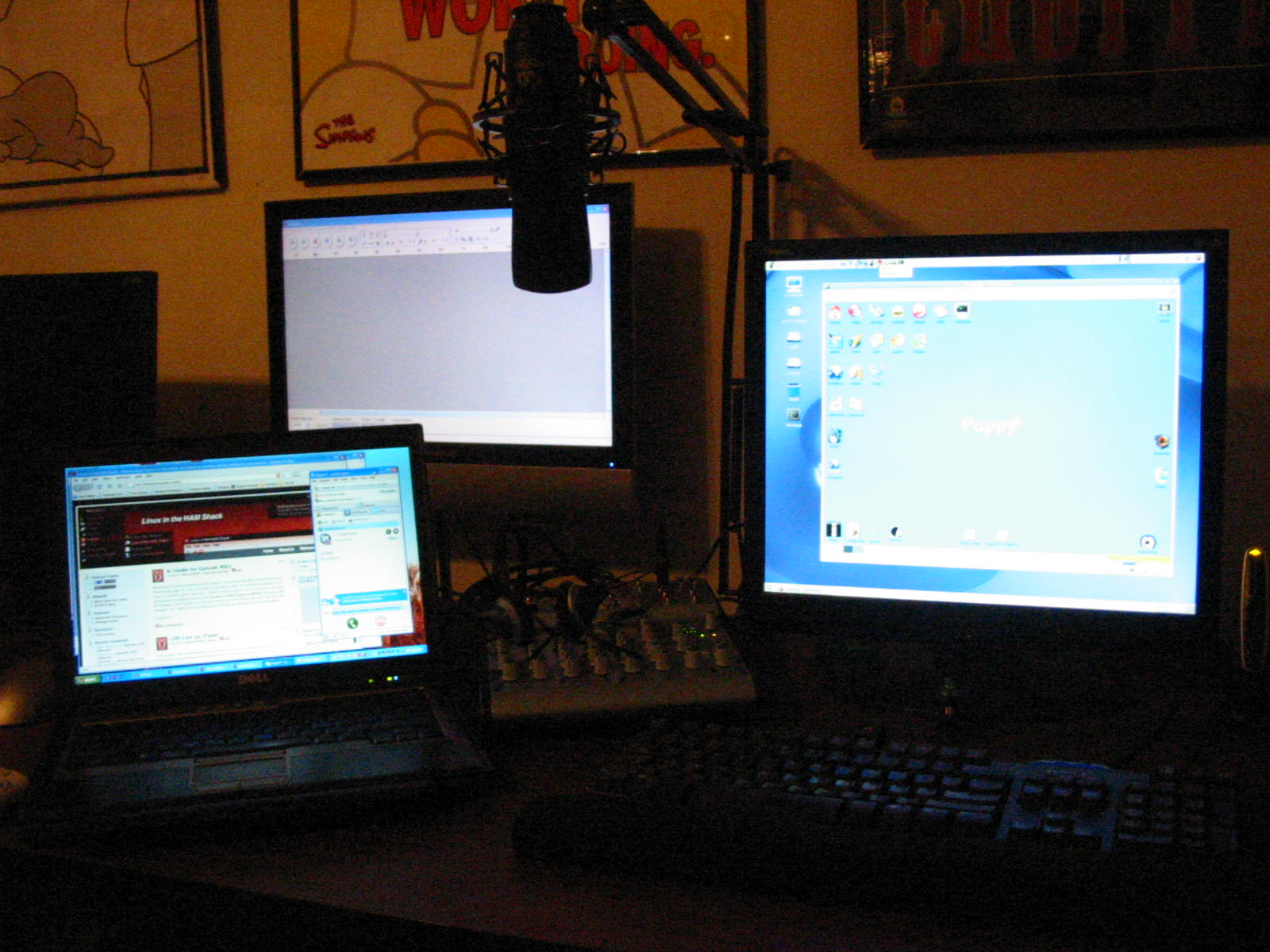Contributors:
- Tim KI6BGE tells us he is finally up and running with Ubuntu on his laptop
- Jerry KD0BIK thanks us for mentioning Practical Amateur Radio Podcast
- Blog post from Tim VK5FNET at the Homebrew Blog Talking about Linux in the Ham Shack and Solder Smoke
- XE1GXGÂ in Jalisco Mexico tells us by way of 73's.org that he enjoys the show and there is no swine flu in Jalisco
- Thanks to the Japanese Blog Atworld.jp/radioshack for the mention
- A New five star review at Itunes for the show
- KI6FEN Would like to know why Linux is better than the alternatives because everybody tells him to use something different
- Myron KC5OHG Downloaded Ubuntu and wants to know how to install it.
- Alex OZ9AEC with corrections to Episode 12 concerning Grig. An icon for Grig can be found at "/usr/share/pixmaps/grig/ic910.png" ( I am Russ, I am! )
- Jeff KB5WCK tells us he put a link on his website for us at kb5wck.com and ask what software we use to record the podcast
- KI4YMD uses xlog for logging and a signallink usb with FLdigi but needs help with SSTV
Announcements:
- Resonant Frequency is now running on Drupal check it out www.rfpodcast.info Russ even likes it and does a mini review
- We did not mention South East Linux Fest
Links and Notes:
- You can get Linux for free
- Most of the more common software is open source and there is a Linux version
- You don't have to go to best buy to get Linux. You can download it from Home
- Windows and Apple application are closed source. In Linux you get the source code and are free to modify it to fit your needs
- Richard runs a couple of windows machines and has to reboot them very often. He also runs Linux machines he doesn't have to reboot for months
- The myth of support is that Windows online support is helpful and you can't get support for Linux. The truth is Windows support people are inept and Linux support can be found in community forums, online tutorials, Howto's, and some distro's allow you to sign up for online tech support at a cost that is much lower than the cost of a copy of Windows or OSX. Yes if it is pre-installed you are still paying for the operating system.
- Issues with QSSTV
- Problems finding usb0
- lspci and lsusb commands
- An alternative to QSSTV for Slow Scan TV
- The current version of QSSTV seems to be a little deaf
- Use a piece of software written for Windows
- Enter WINE
- Add WINE from the Repo's or from Winehq.org
- At WINEHQ you can find an application database of programs that are known to run under WINE. If it is not in the database that doesn't mean it doesn't run under WINE.
- When WINE is installed then download MMSSTV from
- at the command prompt in a terminal type "wine program-name" Probably mmsstv.exe
- Don't be afraid of the wine configuration area
- Change your station information in MMSSTV
- Set your audio levels
- You will need a copy of MS paint to install in wine to edit pictures for MMSSTV but we would never tell you to do so 🙂
- If you choose to use Windows. Please use a legal copy.
- Russ does a shout out to Code Weavers at codeweavers.com
- Richard sends a shout to Fresh Ubuntu Podcast
- Richard shamelessly plugs Resonant Frequency at rfpodcast.info
Music:
- Gamma Leonis – Bacon, Linux and Tomato (Part I & II)
- Sean Smith - Satellite
- The Black Seeds - One By One
